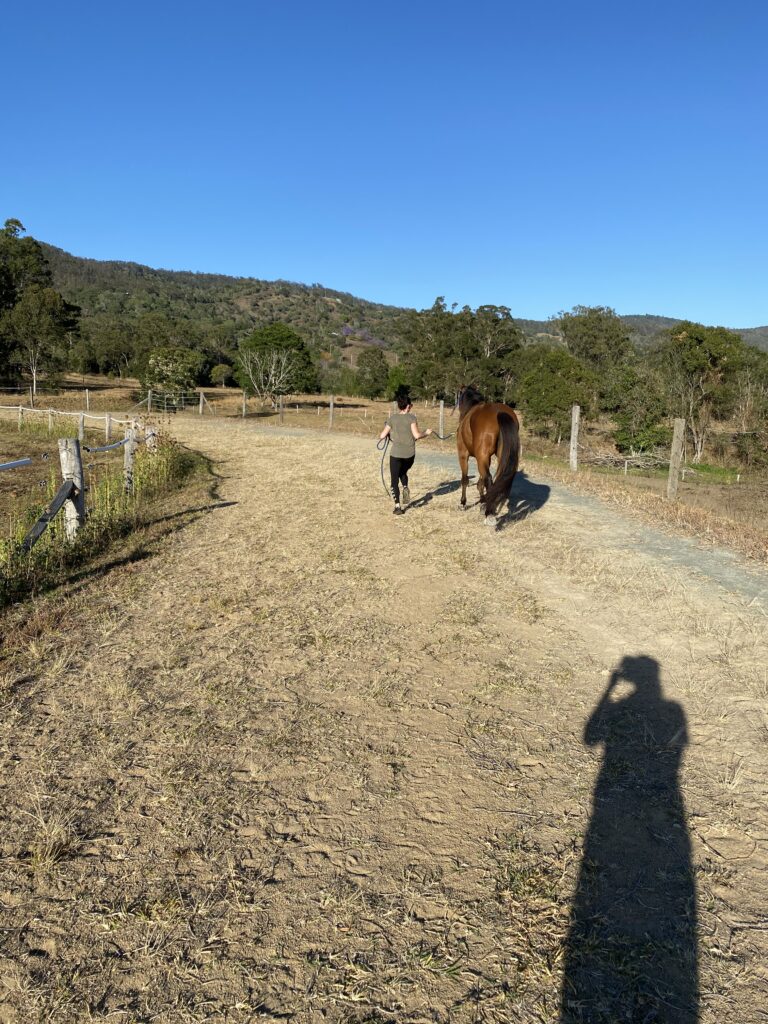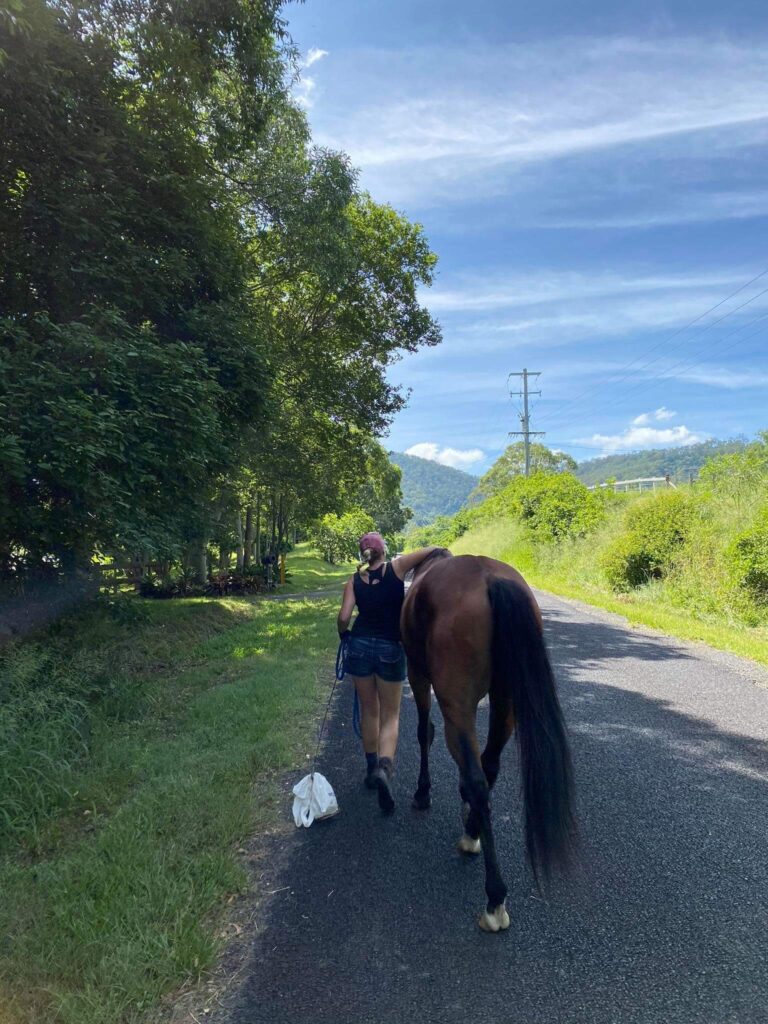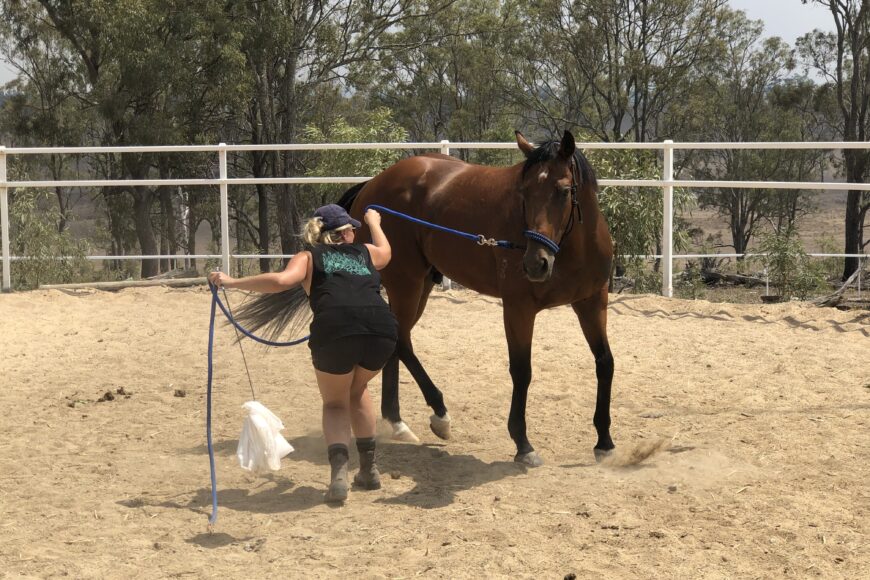The mistake humans commonly make when working with horses is that we believe they understand us and mirror our behaviour – this is a yes and no situation. We also try to be the boss, instead we should be looking at it as being their guide they want to trust and follow. This is done through how we communicate to the horse, understanding what they are reading from us through several areas.
There are several ways humans communicate with horses, using specific tools:
- Auditory
- Body Language
- Natural Aids: Legs, Hands, Seat and Mind
I am a firm believer in understanding how horses behave in the natural herd environment. If you do not try to view the herd instincts, you will not fully understand how to clearly communicate with a horse (see additional notes on this in my previous blog about Horse Communication’s). I will briefly touch on the above to help broaden your knowledge and interest in understanding how to best be one with horses while guiding them to make the right choices.
Important Note: Horses are known as a “flight instinct” animal, this means that their first instinctual response to an unknown, either sound or object, is to remove themselves from the immediate area.
A good example of instinctual flight would be response to a falling branch. The horse would immediately try to remove themselves from the direction from which the sound came. We, on the other hand, may look and acknowledge that it was “only a branch”.
Auditory:
Horse’s hearing runs on higher frequencies (pitches) than humans can hear, so it is important to remain calm and use a lower level of tone around horses. This allows them to exist in the natural environment with what to a horse could be seen to be threats and/or along with surrounding environmental factors.
Fun Fact: Frequency is a more technical term for pitch or the number of vibrations a sound produces per second.
Fun Fact: A horse has the most mobile ears of any domestic animal; they can twist nearly 180 degrees from front to back as they focus on different surrounding sounds.
So, with these facts in mind, it is important to remember:
- Loud communication/voice commands are not necessary.
- Try to communicate in a lower level.
- To calm a horse, use a soothing tone.
- Be aware that loud music and the noise from radio can be too much, instead play more soothing music.
- It is important to include voice commands when first working your horse.
START ON THE GROUND: this means working with your horse on the ground so he or she understands what you are asking them to do, not one thing works for all horses so you will have to work around some training items. By listening and observing the response from your horse you will be aware that communication must have flexibility factored in to achieve a “mutual happy end result”.

Body Language:
The moment a horse can see you, they are reading your body language and energy. You by nature want to be placed as the horse’s guide. Being herd animal’s, they are followers.

As the guide you need to be aware of your movements. Make confident steps and maintain a confident heartbeat by regulating yourself and taking regular steady breaths in and out. A horse will very quickly decide on whether they should be afraid, attentive, or relaxed from your stance. I always like to say think of how John Wayne stands, calm, confident, with purpose and no fear, this is what you want to do.
Natural Aids:
What is meant by natural aids? Well, there are several: hands, legs, mind, and body, and we use them all with every interaction with a horse.
- Your Body: Weight and Balance
Think about your horse’s pressure points and how you can use your body to communicate with your horse. This can be done both ground and saddle. Let us break this down, starting with groundwork (my favourite topic). Always from ground before saddle, if you have not accomplished it on the ground do not try in the saddle. Teach your horse how to move their body and gates on the ground by using your body position and activity to encourage forward movement, turning, downward movement and stopping.
When in the saddle I suggest thinking about where your horses pressure points are and what happens when you use your body to put pressure on i.e., foot or weight in saddle.
Fun Fact: Not one thing will work for each horse – experiment, think out of the box while keeping in mind the concept of the horse’s pressure points.
- Hands: Guidance and Direction
Again, breaking it down, groundwork you provide your horse with pace and direction with your hands and then in the saddle it is more reinforcing if required what you are asking through your seat. If required, you can use artificial aids in support of natural aids (not replacements) to assist in communicating i.e., lunge whips, dressage whips and rope halters.
NOTE: I cannot stress the importance of understanding your natural aids and how to use them to get the best and most natural result.
- Your Mind: Evaluation and Decision
The power of your mind sets the tone for anything you do with your horse. When talking about the mind you need to look at it from an observation and mindset point of view. Think about how you feel, what are you holding onto and even confidence in the situation you are in with your horse – if you are not aware of this be aware your horse will be.
“You can’t have a positive ride with a negative mind.”
“I can’t control what happens to me. All I can control is my response.” Natasha Althoff

In conclusion, horses interpret our actions on their own terms through body language and their other senses. Therefore, we need to understand their natural herd behaviours which will help us recognise what they are saying to each other, us and what we may be saying to them consciously or subconsciously through our movements, posture, and positioning.

